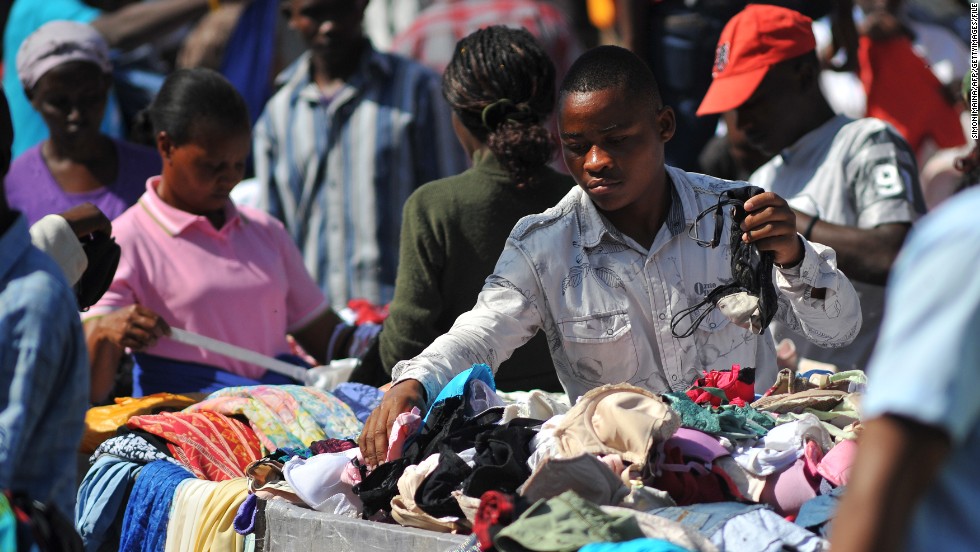On the International Used Clothing Market

This odd editorial in Bloomberg requires a discussion. Basically, it explores the problem of fast fashion and particularly its environmental impact. Fair enough, these are problems. But the framing is bizarre because it bemoans the decline of the international used clothing market, where rich white people used to just dump their unwanted clothes on the people of Asia, Africa, and Latin America.
The rise of “fast fashion” is thus creating a bleak scenario: The tide of secondhand clothes keeps growing even as the markets to reuse them are disappearing. From an environmental standpoint, that’s a big problem. Already, the textile industry accounts for more greenhouse-gas emissions than all international flights and maritime shipping combined; as recycling markets break down, its contribution could soar.
The good news is that nobody has a bigger incentive to address this problem than the industry itself. By raising temperatures and intensifying droughts, climate change could substantially reduce cotton yields and thus make garment production less predictable and far more expensive. Industry executives are clearly concerned.
The question is what to do about it. Some brands, such Hennes & Mauritz AB (better known as H&M) and Patagonia Inc., are experimenting with new fibers made from recycled material, which could help. But longer-term, the industry will have to try to refocus consumers on durability and quality — and charge accordingly. Ways to do this include offering warranties on clothing and making tags that inform consumers of a product’s expected lifespan. To satiate the hunger for fast fashion, meanwhile, brands might also explore subscription-based fashion rental businesses — such as China’s YCloset — or other more sustainable models.
None of these options can replace Panipat and the other mill towns that once transformed rich people’s rags into cheap clothes for the poor. But, like it or not, that era is coming to an end. Now the challenge is to stitch together a new set of solutions.
What is lacking here is any thought about how the used clothing market actually impacts people in poor nations. In many African nations, the used clothing is called various versions of “dead white man’s clothing.” Ultimately, this charity that makes you feel good is seen as a colonialist act by those who experience those clothes after you are done with them. That’s not to say that the environmental impact of fast fashion isn’t real–it absolutely is. But we have to approach these questions from a space somewhere else than “what makes western consumers feel good about themselves.”


